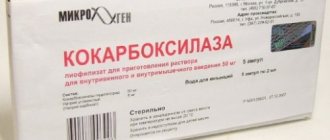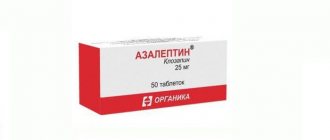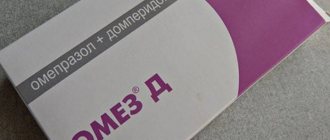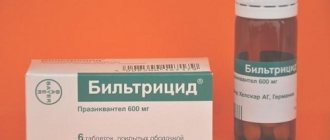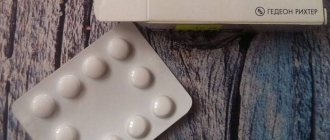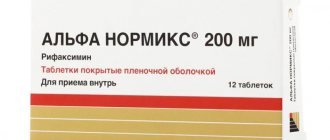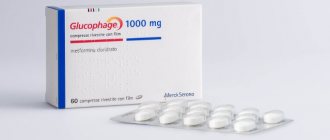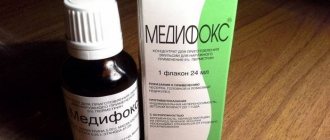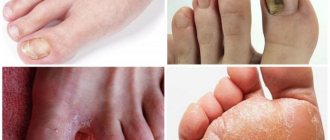Description
Capsule-shaped two-layer tablets, one layer is orange, the other layer is white. The orange layer may contain white inclusions. The white layer may contain orange inclusions. One side of the tablet bears the Coldrex marking in the form of embossing.
Pharmacotherapeutic group: acute respiratory infections and “cold” symptoms remedy (analgesic non-narcotic drug + psychostimulant + alpha-adrenergic agonist + expectorant + vitamin)
ATX code: N02BE51
Coldrex price
You can purchase the medicine in pharmacies or order using electronic resources. To compare the cost of medicine in Moscow, use the table:
| Pharmacy name | Price (in rubles) | |||
| pills | Hotrem | Maxflu | Junior Hot Drink | |
| Neopharm | 197 | 154 | 257 | 359 |
| ElixirPharm | 210 | 210 | 219 | 318 |
| Doctor Stoletov | 180 | 164 | 187 | 269 |
| Dialogue | 135 | 136 | 152 | 216 |
Contraindications
The drug should not be taken in case of increased sensitivity to the components included in the drug, in case of genetic absence of glucose-6-phosphate dehydrogenase, in case of diseases of the blood system, severe impairment of liver or kidney function, thyrotoxicosis, diabetes, arterial hypertension, alcoholism, simultaneously with inhibitors MAOIs and within 14 days after their discontinuation (see section “Interaction with other drugs”); during pregnancy and lactation, as well as in childhood (up to 12 years).
With caution - with angle-closure glaucoma, prostatic hyperplasia; congenital hyperbilirubinemia (Gilbert, Dubin-Johnson and Rotor syndrome), pheochromocytoma, vasospastic diseases (Raynaud's syndrome), diseases of the cardiovascular system.
Contraindications
The medicine should not be used in children under 6 years of age, or in the following cases:
- individual intolerance to one of the components;
- and kidney dysfunction ;
- lack of glucose-6-phosphate dehydrogenase;
- diseases of the circulatory system;
- leukopenia;
- thrombophlebitis;
- insomnia;
- organic diseases of the cardiovascular system;
- epilepsy;
- decompensated heart failure;
- severe form of atherosclerosis ;
- cardiac ischemia;
- prostatic hypertrophy;
- glaucoma;
- lactation , pregnancy ;
- alcoholism;
- severe anemia ;
- thrombosis;
- states of increased arousal;
- severe arterial hypertension;
- hyperthyroidism;
- cardiac conduction disorder;
- tendency to vascular spasms;
- acute pancreatitis;
- severe form of diabetes mellitus .
Directions for use and doses
Inside.
Adults and children over 12 years of age: single dose – 2 tablets. Repeated use of the drug is possible no earlier than after 4 hours and no more than 4 times a day. The maximum daily dose should not exceed 8 tablets. The duration of treatment without consulting a doctor is no more than 7 days. Do not exceed the indicated dose. Do not use concomitantly with other paracetamol-containing drugs, sympathomimetics (such as decongestants, appetite suppressants, amphetamine-like psychostimulants), or with other drugs to relieve cold and flu symptoms. Excessive consumption of caffeine (tea, coffee and other drinks containing caffeine) should be avoided as this may contribute to the development of unwanted side effects (see section "Side Effects"). If symptoms of the disease persist while taking the drug, you should consult a doctor.
Side effects
Side effects are classified by organ system and frequency. The frequency of side effects is defined as follows: very often (greater than or equal to 1/10), often (greater than or equal to 1/100 and less than 1/10), sometimes (greater than or equal to 1/1000 and less than 1/100), rarely ( greater than or equal to 1/10,000 and less than 1/1000) and very rare (greater than or equal to 1/100,000 and less than 1/10,000). At recommended doses, the drug is usually well tolerated. With long-term use in excess of the recommended dose, hepatotoxic and nephrotoxic effects may occur. Excessive consumption of caffeine (tea, coffee) while taking Coldrex may increase the manifestation of side effects caused by caffeine, such as insomnia, irritability, nervous tension, headache, palpitations, and disturbances in the digestive system.
From the hematopoietic organs: Very rare: thrombocytopenia
Allergic reactions: Very rare: anaphylaxis, skin rash, urticaria, allergic dermatitis, angioedema, Stevens-Johnson syndrome
From the respiratory system: Very rare: bronchospasm in patients sensitive to aspirin and other nonsteroidal anti-inflammatory drugs (NSAIDs)
From the digestive system: Very rarely: nausea, vomiting, liver dysfunction
From the central nervous system: Very rare: irritability, nervous tension, dizziness, headache, insomnia
From the sensory organs: Very rare: mydriasis, acute attack of glaucoma in most cases in patients with angle-closure glaucoma
From the cardiovascular system: Very rare: tachycardia, palpitations
From the urinary system: Very rarely: dysuria, urinary retention in patients with obstruction of the bladder outlet due to prostatic hypertrophy. If any unwanted reactions occur, consult your doctor.
Compound
The composition of Coldrex includes the following active substances: phenylephrine , caffeine , ascorbic acid , paracetamol , terpine hydrate .
Additional components: corn starch, povidone , sodium lauryl sulfate, stearic acid, potassium sorbate, sunset yellow dye FCF (E 110), talc.
Overdose
If you suspect an overdose, even if you feel well, you must stop using the drug and immediately seek medical help.
Symptoms (due to paracetamol): pale skin, decreased appetite, nausea, vomiting; liver failure, hepatonecrosis (the severity of necrosis due to intoxication directly depends on the degree of overdose). Toxic effects in adults are possible after taking more than 10-15 g of paracetamol: increased activity of “liver” transaminases, the clinical picture of liver damage appears after 1-6 days. Rarely, liver failure develops rapidly and can be complicated by renal failure (tubular necrosis).
Treatment: gastric lavage followed by the use of activated carbon, administration of SH-group donors and precursors for the synthesis of glutathione - methionine 8-9 hours after an overdose and N-acetylcysteine - after 12 hours.
Symptoms (caused by caffeine): epigastric pain, vomiting, frequent urination, tachycardia, arrhythmia, stimulation of the central nervous system (insomnia, restlessness, excitability, anxiety, increased neuro-reflex excitability, tremor and convulsions). It should, however, be taken into account that the appearance of clinically significant symptoms of caffeine overdose when taking this drug is always associated with severe liver damage caused by an overdose of paracetamol.
Treatment: symptomatic, no specific antidote.
Symptoms (due to phenylephrine): irritability, headache, dizziness, insomnia, increased blood pressure, nausea, vomiting, increased excitability, reflex bradycardia. In severe cases of overdose, hallucinations, confusion, convulsions, and arrhythmias may develop.
Treatment: symptomatic therapy, for severe arterial hypertension, the use of alpha blockers such as phentolamine.
Symptoms (due to ascorbic acid): high doses of ascorbic acid (more than 3000 mg) can cause temporary osmotic diarrhea and gastrointestinal disturbances such as nausea, stomach discomfort. Manifestations of overdose can be classified as those caused by severe liver damage as a result of an overdose of paracetamol.
Treatment: symptomatic, forced diuresis.
Symptoms (due to terpin hydrate): disturbances in the gastrointestinal tract, such as nausea, vomiting, pain in the stomach.
Treatment: symptomatic.
Interaction with other drugs
The drug should not be taken simultaneously with tricyclic antidepressants, beta-blockers and other antihypertensive drugs, as well as sympathomimetics, since the risk of developing hypertension and other disorders of the cardiovascular system increases. Do not take simultaneously with MAO inhibitors and within 14 days after their discontinuation, as the risk of developing hypertension increases. When taken simultaneously with digoxin and cardiac glycosides, the risk of developing heart rhythm disturbances or a heart attack may increase. The anticoagulant effect of warfarin and other coumarins may be enhanced by concomitant long-term, regular daily use of paracetamol, with an increased risk of bleeding. Irregular administration of single doses does not have a significant effect. The risk of developing hepatotoxicity increases with simultaneous use of barbiturates, diphenine, carbamazepine, rifampicin, zidovudine and other inducers of microsomal liver enzymes. Check with your doctor if you are taking metoclopramide, domperidone (used to treat nausea and vomiting), or cholestyramine (used to lower blood cholesterol), because Metoclopramide and domperidone increase the rate of absorption of paracetamol, and cholestyramine reduces it.
Release forms
Coldrex has a single release form - powder, from which you need to prepare a solution for internal use.
This form of the drug has two varieties with slightly different dosages:
- Coldrex Maxgripp contains paracetamol (1000 mg dose), phenylephrine hydrochloride (10 mg dose), ascorbic acid (40 mg dose).
- Coldrex Hotrem contains paracetamol (dosage 750 mg), phenylephrine hydrochloride (dosage 10 mg), ascorbic acid (dosage 60 mg).
In addition to the main ones, Coldrex contains a number of excipients, including flavorings, sucrose, starch, dyes and other components.
There are several flavor solutions for this medicine: the medicine can taste like lemon and honey, or just lemon.
Powder for oral use, packaged in individual sachets for single use. A cardboard box with the drug may contain from 5 to 10 such packages.
Special instructions
Before taking Coldrex, consult your doctor:
- if you are taking other medications containing paracetamol, as well as other non-narcotic analgesics, NSAIDs (metamizole, acetylsalicylic acid, ibuprofen, etc.);
- if you are taking metoclopramide, domperidone (used to treat nausea and vomiting) or colestyramine (used to lower cholesterol levels in the blood).
TO AVOID TOXIC LIVER DAMAGE, PARACETAMOL SHOULD NOT BE COMBINED WITH ALCOHOL BEVERAGES, AND ALSO TAKEN BY PERSONS PROPENATED TO CHRONIC CONSUMPTION ALCOHOL. If dizziness occurs while taking the drug, you should refrain from performing potentially dangerous activities that require special attention and quick reactions (driving a car or other vehicles, working with moving mechanisms, etc.).
